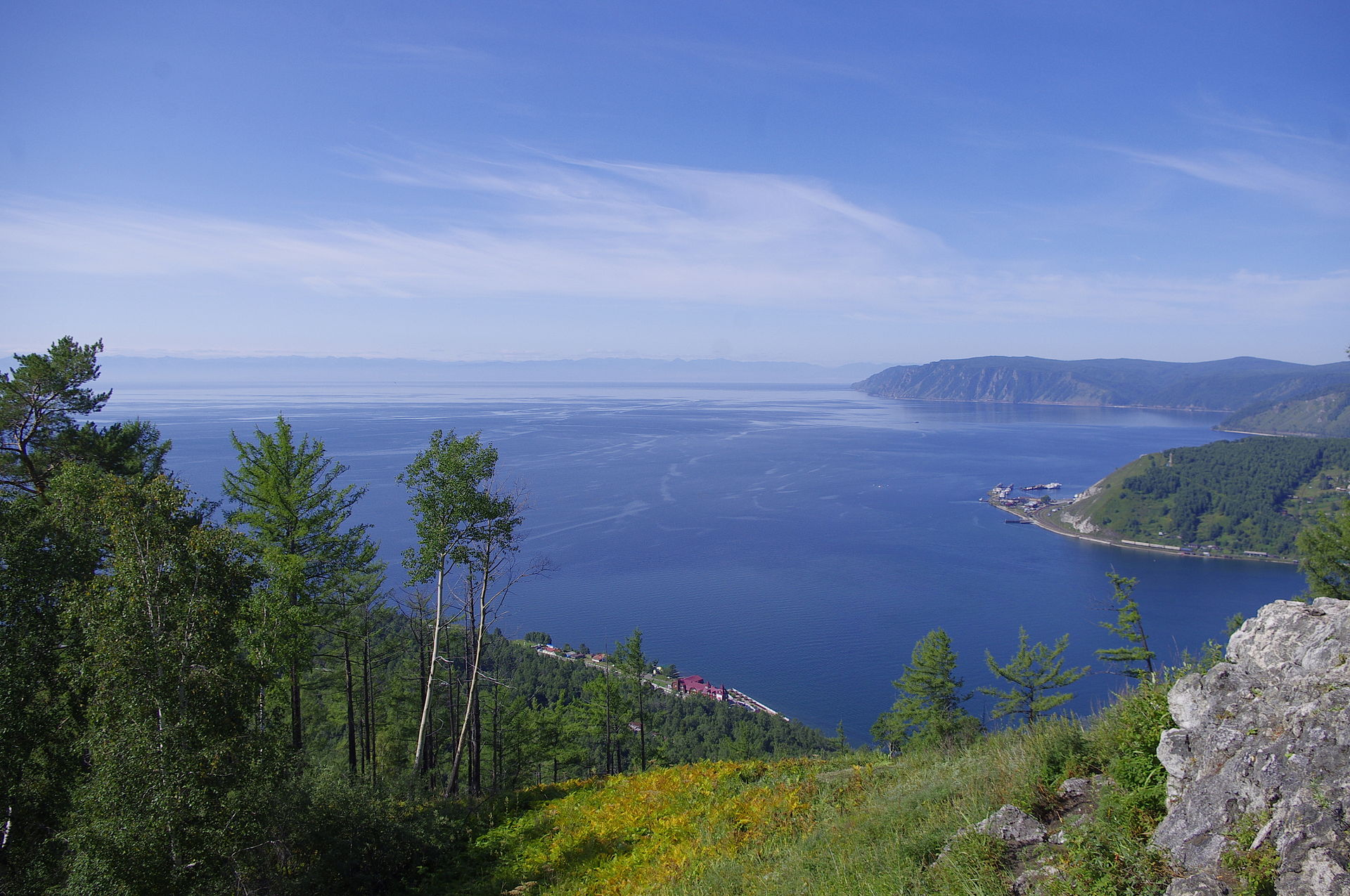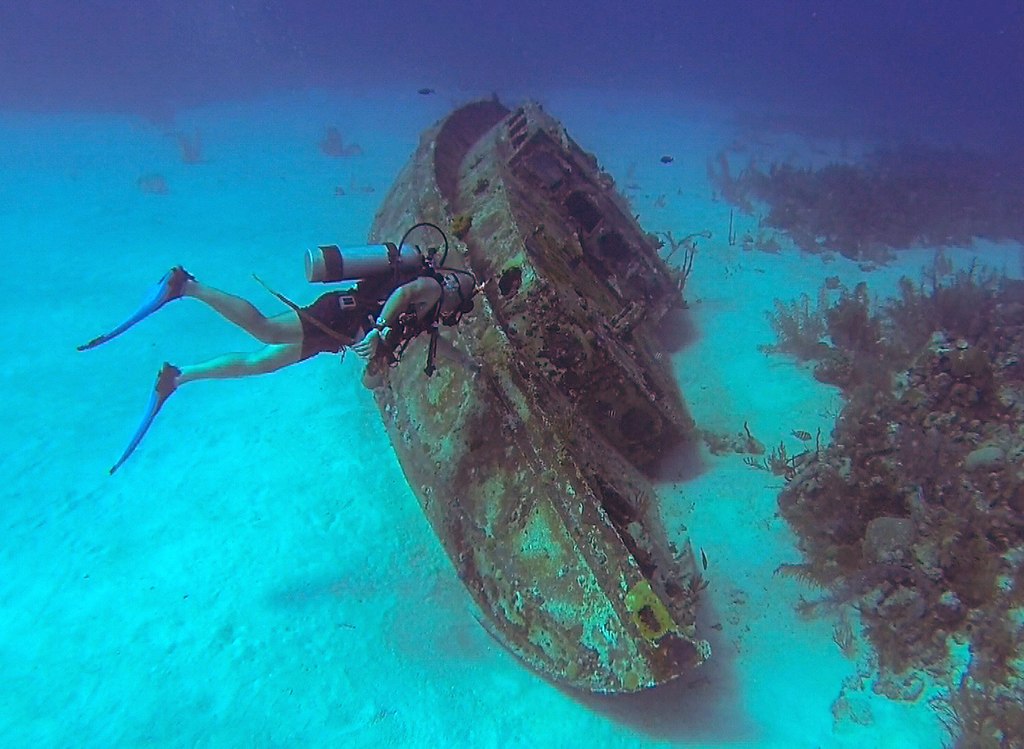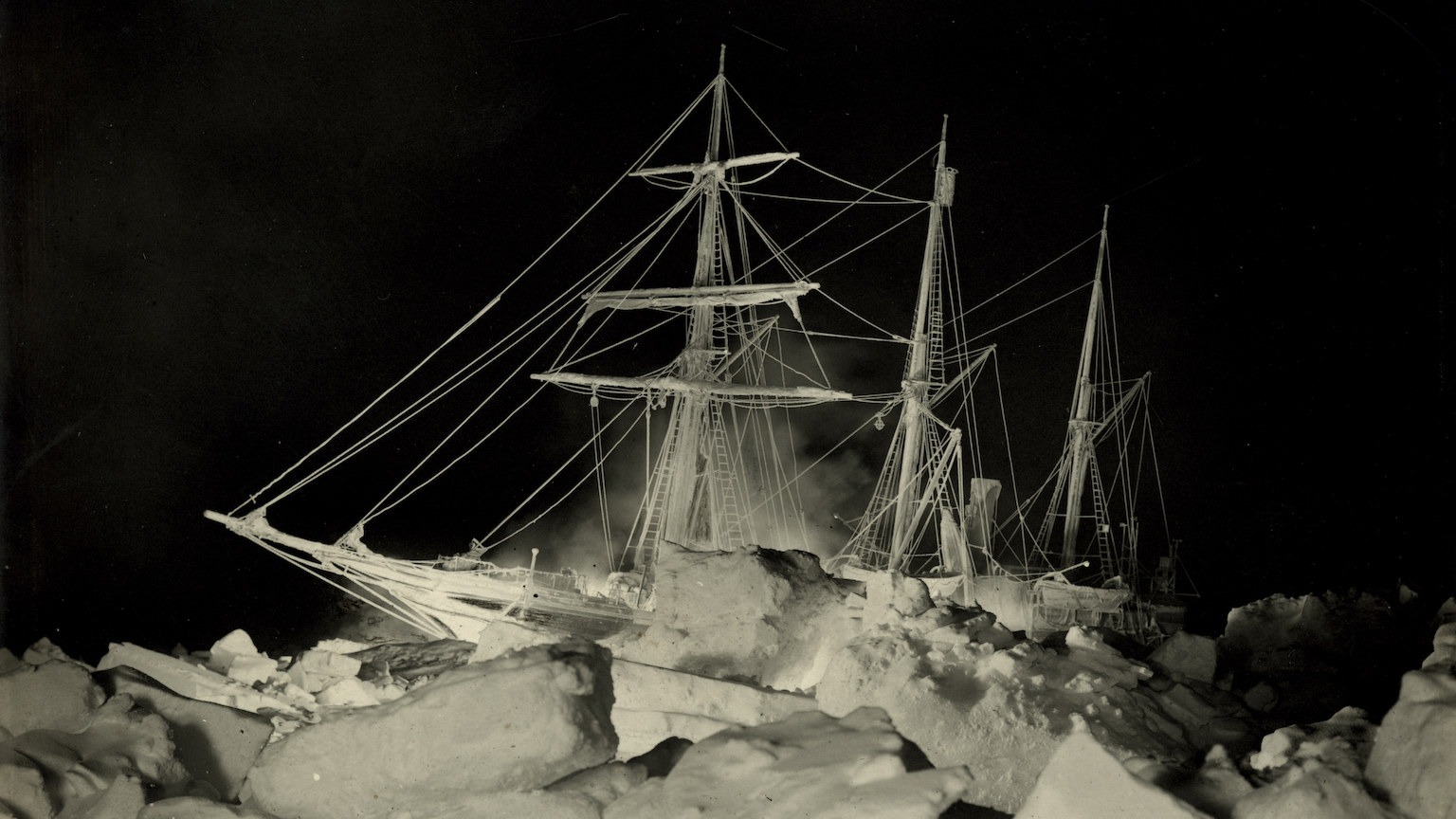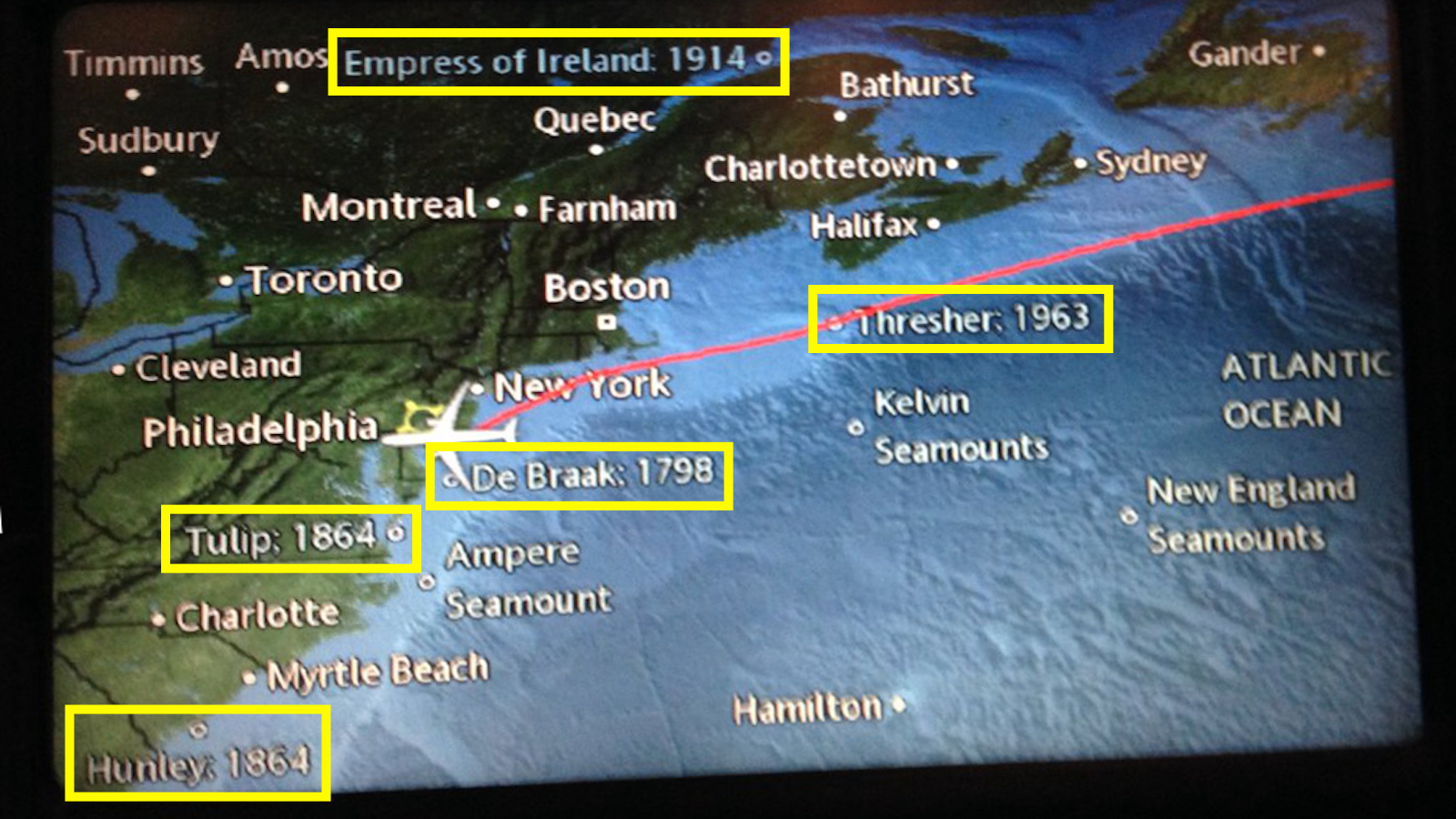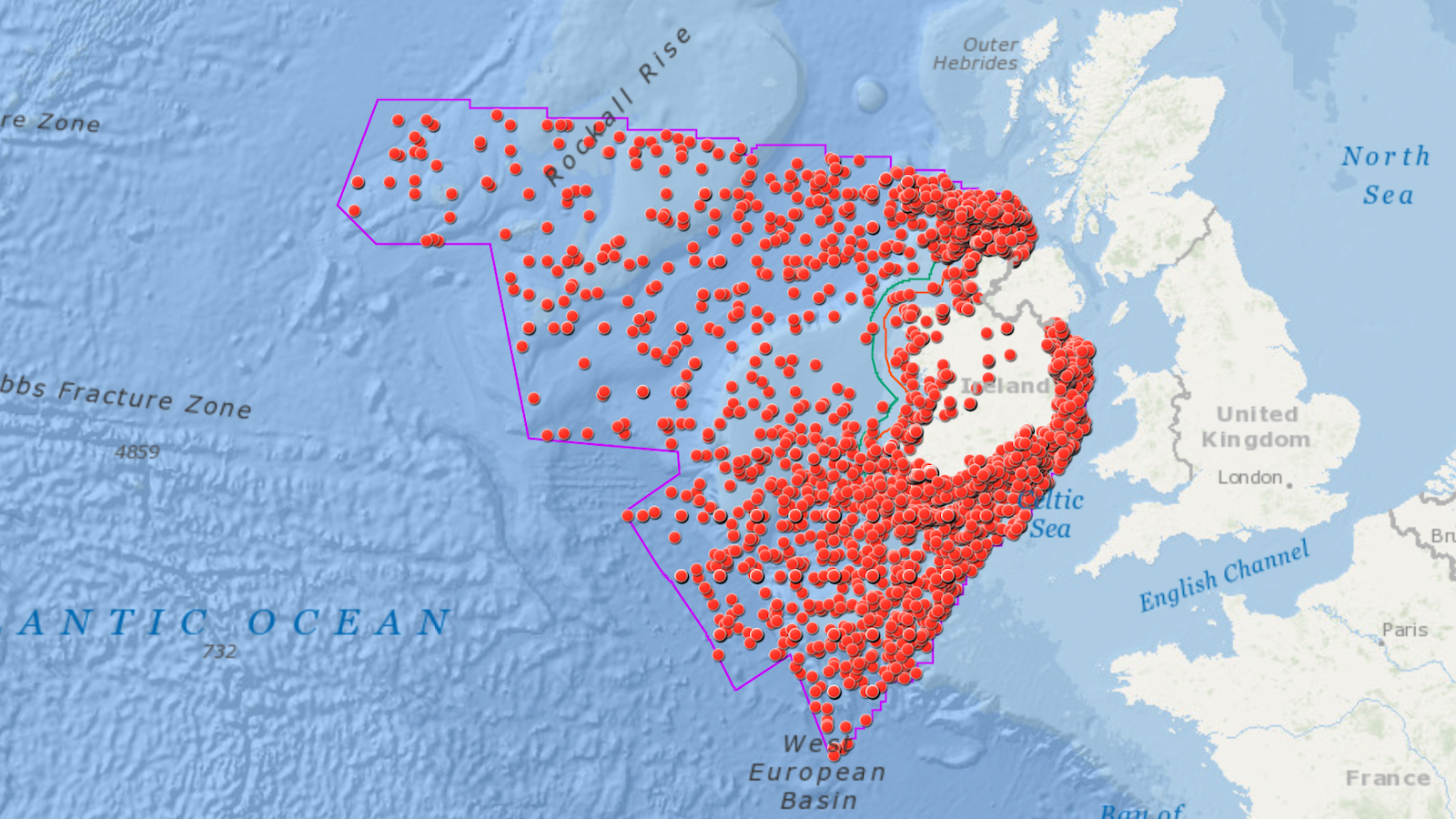Maps of Great Lakes shipwrecks detail one of North America’s biggest graveyards
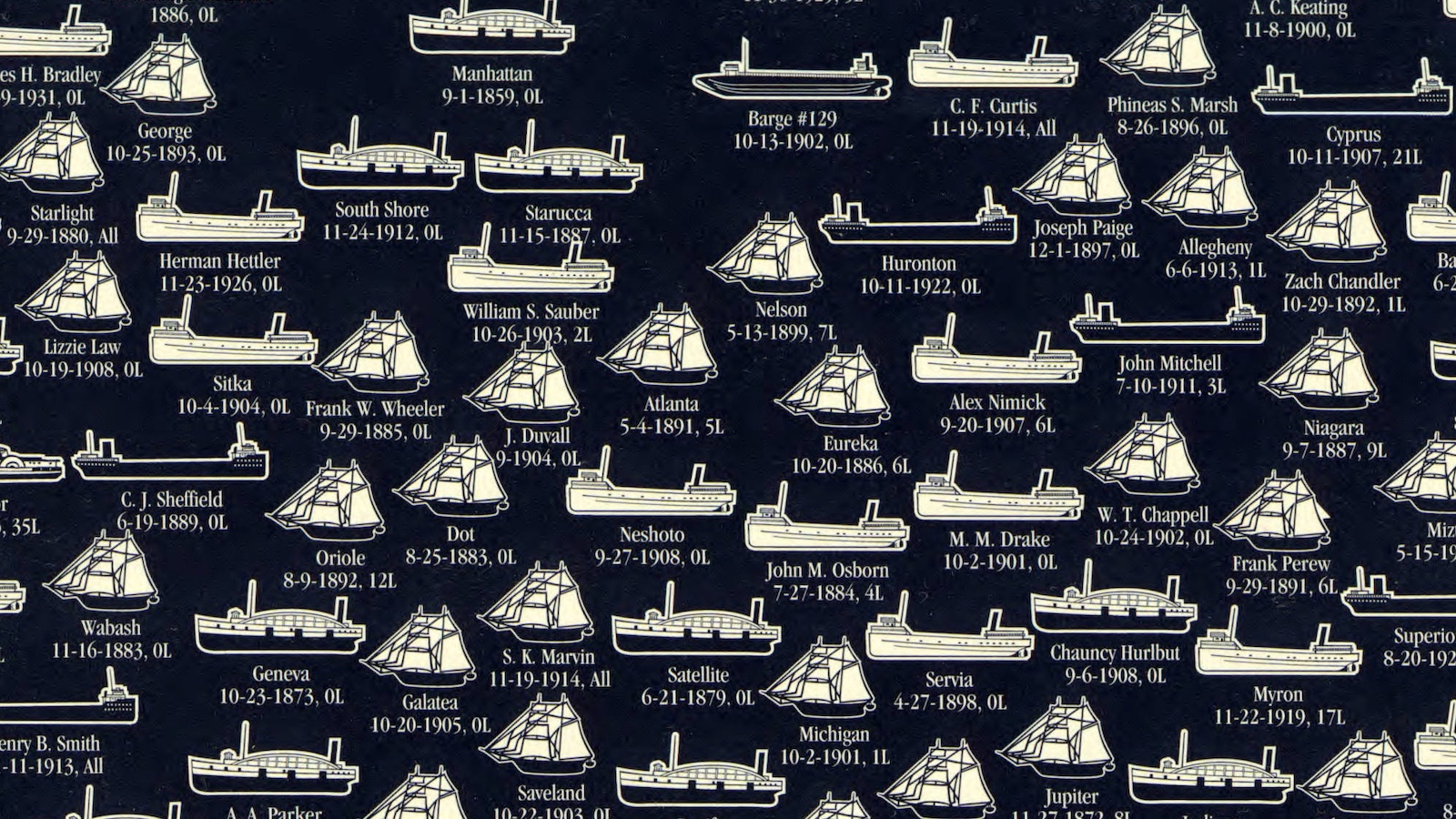
- Though they seem peaceful, North America’s Great Lakes can be as dangerous as the open seas.
- Thousands of ships, and tens of thousands of passengers and crew, have met their demise here.
- These maps look beneath the surface of these usually placid waters to reveal centuries of shipwrecks.
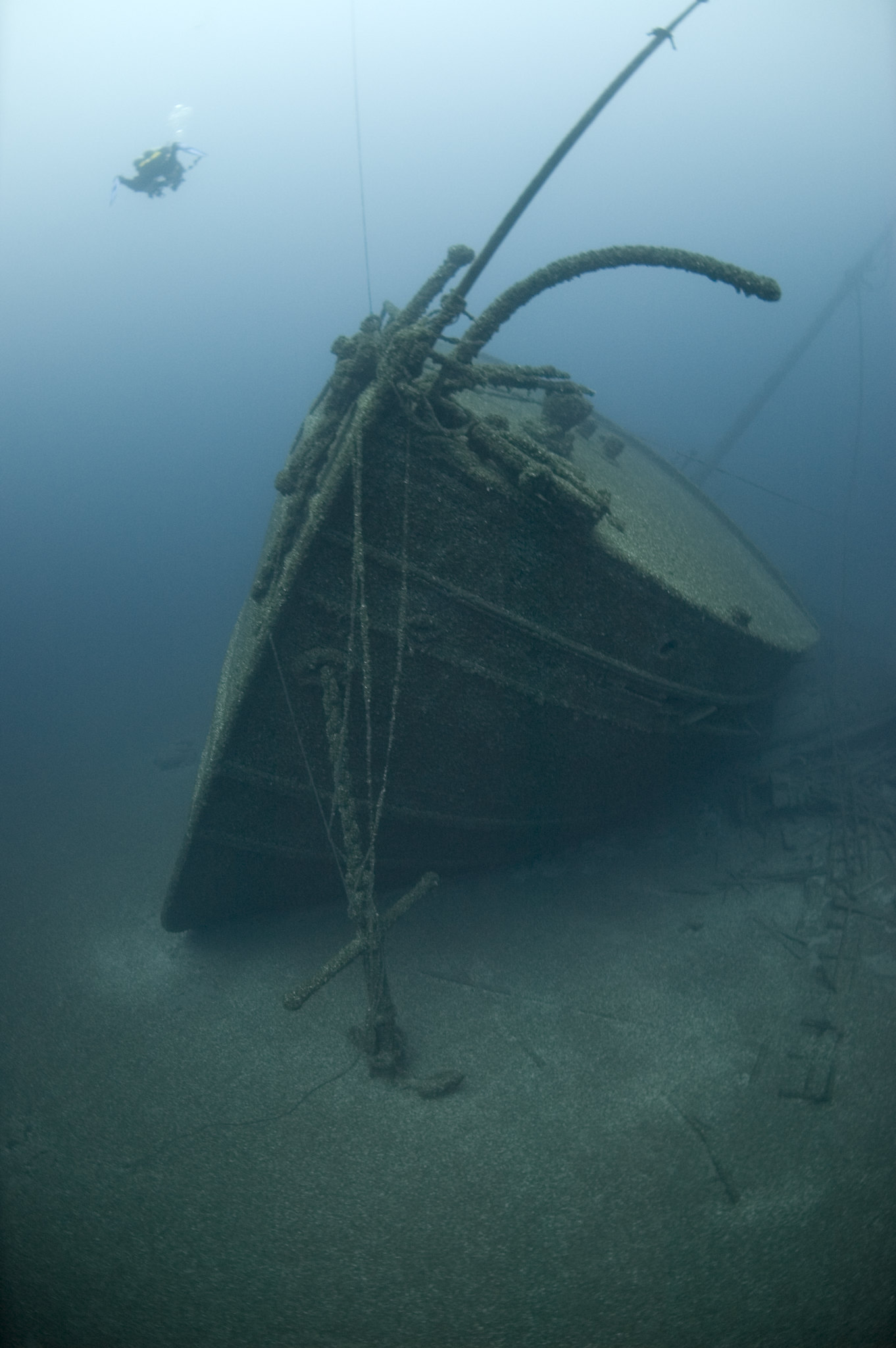
If you’re the kind of person who stays in their cinema seats for the movie credits, you’ll love these maps. They’re a roll call of hundreds of names, ranging from the banal to the fantastic. But this “Graveyard of the Great Lakes” series caters to other personality types as well: people interested in maritime history, specifically shipwreck lore, as well as lovers of stylish design — the white-on-black typography lends these maps a suitably noirish tinge.
Even those of you who are only superficially (pun fully intended) familiar with North America’s Great Lakes — and, hence, probably unaware of the wreckage left by centuries of shipping beneath these deceptively placid waters — will be awe-struck.
Enough Great Lakes shipwrecks to fill a museum
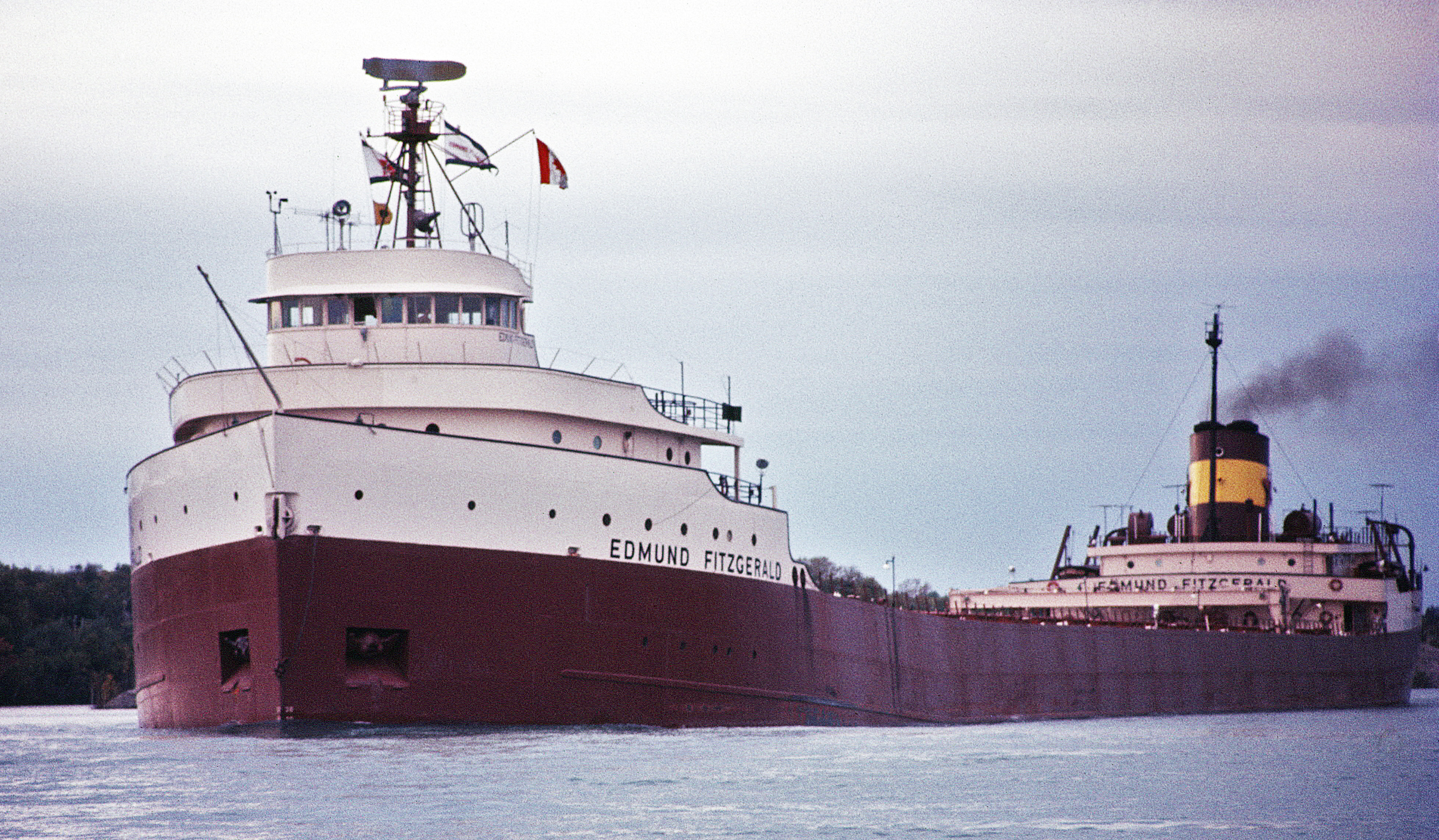
Shipwrecks on the Great Lakes? It sounds preposterous. Shipwrecks are supposed to happen on the wild and unpredictable open seas. How could they possibly occur on lakes, which are entirely enclosed by land? Besides, how high do the Great Lakes’ waves even get? And how far can the nearest port of shelter really be?
You’d be surprised. There are enough sunken ships in these lakes to justify a Great Lakes Shipwreck Museum (at Whitefish Point Light Station on the northern shore of Michigan’s Upper Peninsula, near the eastern end of Lake Superior). There are over 6,000 shipwrecks in the Great Lakes, which have claimed an estimated 30,000 lives. About 550 ships rest at the bottom of Lake Superior alone, “most of which are undiscovered,” says the museum website.
At least 200 lie along the particularly treacherous 80-mile stretch of Lake Superior shoreline, which bears the cautionary nickname “Shipwreck Coast.” Nearby is the Edmund Fitzgerald, which at 730 feet is the largest (and undoubtedly, the most famous) of the Great Lakes shipwrecks.
The five interconnected Great Lakes are truly massive. Combined, they hold about 21% of the world’s fresh surface water (5,472 cubic miles, or 22,812 km3), enough to cover the lower 48 states in 9.5 feet (2.9 m) of water. Because of their depth and size, not to mention the occasionally terrible weather and real danger to shipping, they are often called “inland seas,” or even “America’s fourth coast” (after the Atlantic, Pacific, and Gulf of Mexico).
The ”Great Storm” sent 11 ships to the bottom
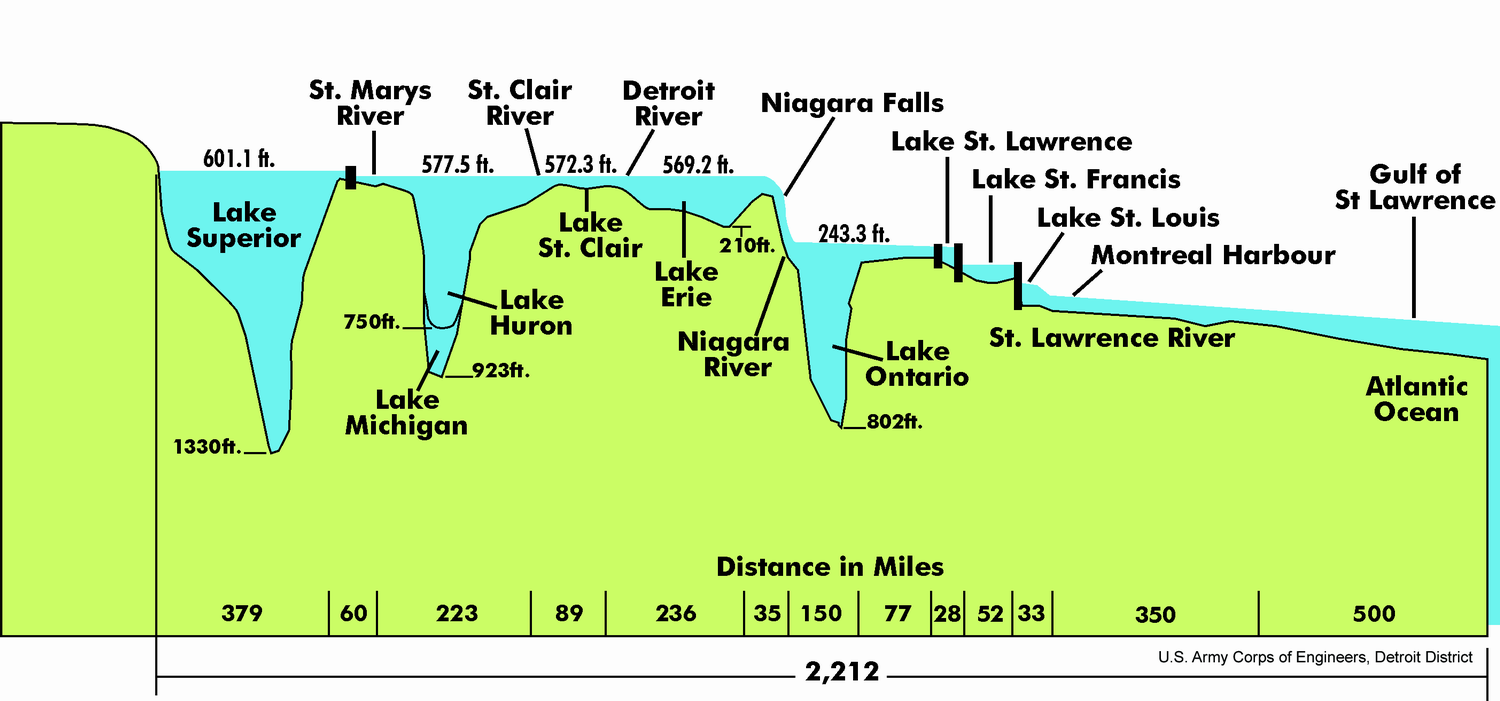
The lakes are infamous for the so-called “white squalls,” which can strike even when waters are flat and calm and have tipped over and destroyed many a vessel. From November 9 to 12, 1913, a now-legendary “Great Storm” swept over all of the Great Lakes, sending 11 ships to the bottom and claiming the lives of 244 crew and passengers.
Perilous circumstances are fertile grounds for superstition. One was against name changes, a sure-fire ticket to getting shipwrecked. This happened to three tugs on Lake Erie, all sinking under different names than their maiden ones. Another is for “hoodoo ships,” shunned by crews because of frequent mishaps, and often uninsurable as a result.
These maps show some of the thousands of wrecks at the bottom of each Great Lake. Each ship is denoted by one of nine logos (schooner, steamer, whaleback, side-wheeler, tug, freighter, propeller, passenger boat, or car ferry) and mentioned by name, and if known, date of wreck and number of lives lost.
Lake Superior: first in size, fourth in wrecks

Not just the largest of the Great Lakes by area (31,700 square miles, or 82,103 km2), Lake Superior is also the largest lake in North America, the world’s largest freshwater lake, and the world’s second-largest lake per se. (The Caspian Sea, which is larger, is salty.) It is also the largest of the Great Lakes by volume (2,903 cubic miles, or 12,100 km3), has the greatest depth (1,332 feet, or 402 m), and the highest elevation (600 feet, or 183 m).
However, in terms of shipwrecks, the “Great Gitche Gumee” only ranks fourth among the five Great Lakes. Nevertheless, the lake has several grisly claims to shipwreck fame. For instance: because of its depth and cold, Lake Superior has the reputation of not giving up its dead. Many seamen are still thought to be on board the ships that took them to the bottom of this lake.
Lake Superior has its own ghost ship (the Bannockburn, spotted frequently since its disappearance with all hands in 1902) and its own treasure ship (the Comet, which sank in 1875 with 70 tons of high-grade silver ore on board). It even has its own UFO mystery. In November 1953, a U.S. Air Force jet was scrambled to investigate an unidentified flying object. After reporting it “in sight,” the jet vanished without a trace.
Only a few local seamen have lived to tell of a phenomenon known as the “Three Sisters”: a trio of giant successive waves that could sink the sturdiest ship. In fact, many think this is what happened to the Edmund Fitzgerald.
A few interestingly named wrecks in Lake Superior include: the Bon Voyage (+1901), the City of St Joe (+1942), the Grampa Woo (+1996), Barge #129 (+1902), and the Chauncy Hurlbut (+1908).
Lake Huron: a “magnet for shipwrecks”
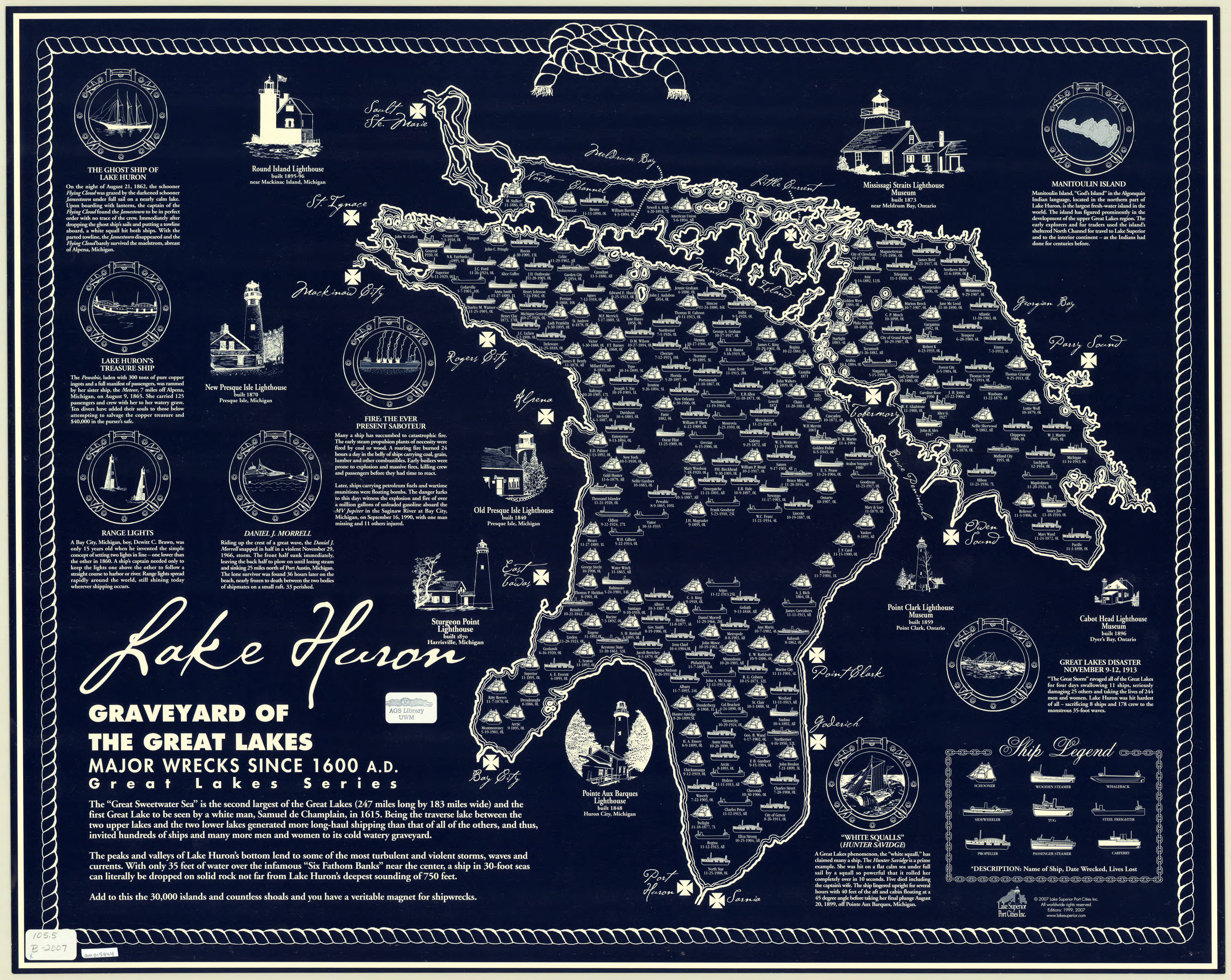
Also known as the “Great Sweetwater Sea,” Lake Huron is the second-largest Great Lake by area (23,007 square miles or 59,600 km2), of which about 14,000 square miles are in Ontario and 9,000 in Michigan. It’s the third Great Lake by volume (850 cubic miles, or 3,540 km3). Because of its many islands, it has the longest shoreline of the five lakes (3,827 miles, or 6,157 km). Manitoulin Island (1,068 square miles, or 2,766 km2) is the world’s largest island in any inland body of water.
As the connector between the two upper and the two lower lakes, it has seen more ship traffic than the other four. Thousands of islands and some very treacherous shoals create a recipe for, as the map legend says, “a veritable magnet for shipwrecks.”
Some stand-out shipwreck names include: the Cream City (+1918), not too far from the Alice Coffee (n/a), the Deleware (sic, +1818) and almost inevitably the Typo (+1899), the Water Witch (+1863), the Saucy Jim (+1910), and the Tempest (now that was asking for it; +1909).
Lake Michigan wrecks: the oldest and the mostest

Lake Michigan is the third-largest Great Lake by area (22,404 square miles, or 57,800 km2) and the second-largest by volume (1,180 cubic miles, or 4,920 km3). It is the only one that is entirely within the United States. Because they are level (at 557 feet, or 176 m) and connected, Michigan and Huron are sometimes considered to be one lake.
Lake Michigan contains more shipwrecks than any of the other Great Lakes, as well as the oldest recorded one: the French ship Griffon, the first European vessel to sail the Lakes. It vanished with all six hands in 1679. Nobody knows what happened to it, or where its wreck may be found.
Lake Michigan has its share of ghost ships, not least the Alpena, which went down with 80 souls in October 1880. Many still see the side-wheeler steaming to Chicago, its ghostly crew busy feeding the furnace. Another is the Rouse Simmons, also known as the Santa Claus Ship, because it supplied Chicago with Christmas trees from the Upper Peninsula. It was lost in November 1913, leaving the lake littered with trees. All that was ever found of her crew was her captain’s wallet, 10 years later in a fisherman’s net.
On 24 July 1915, the Eastland left Chicago packed with 2,500 Western Electric employees and their families for a company cruise. Leaving her berth, she rolled over, a disaster that cost 835 lives — the deadliest wreck in Great Lakes history. And it’s not just ships that rest at the bottom of this lake but also, off Chicago, more than 300 U.S. Navy planes, quite near the former location of two training aircraft carriers.
A few notable names from the ship graveyard that is Lake Michigan: the Material Service (+1936), the Reliable (+1913), and the Orphan Boy (+1885).
Lake Erie: so shallow you can almost Walk in the Water
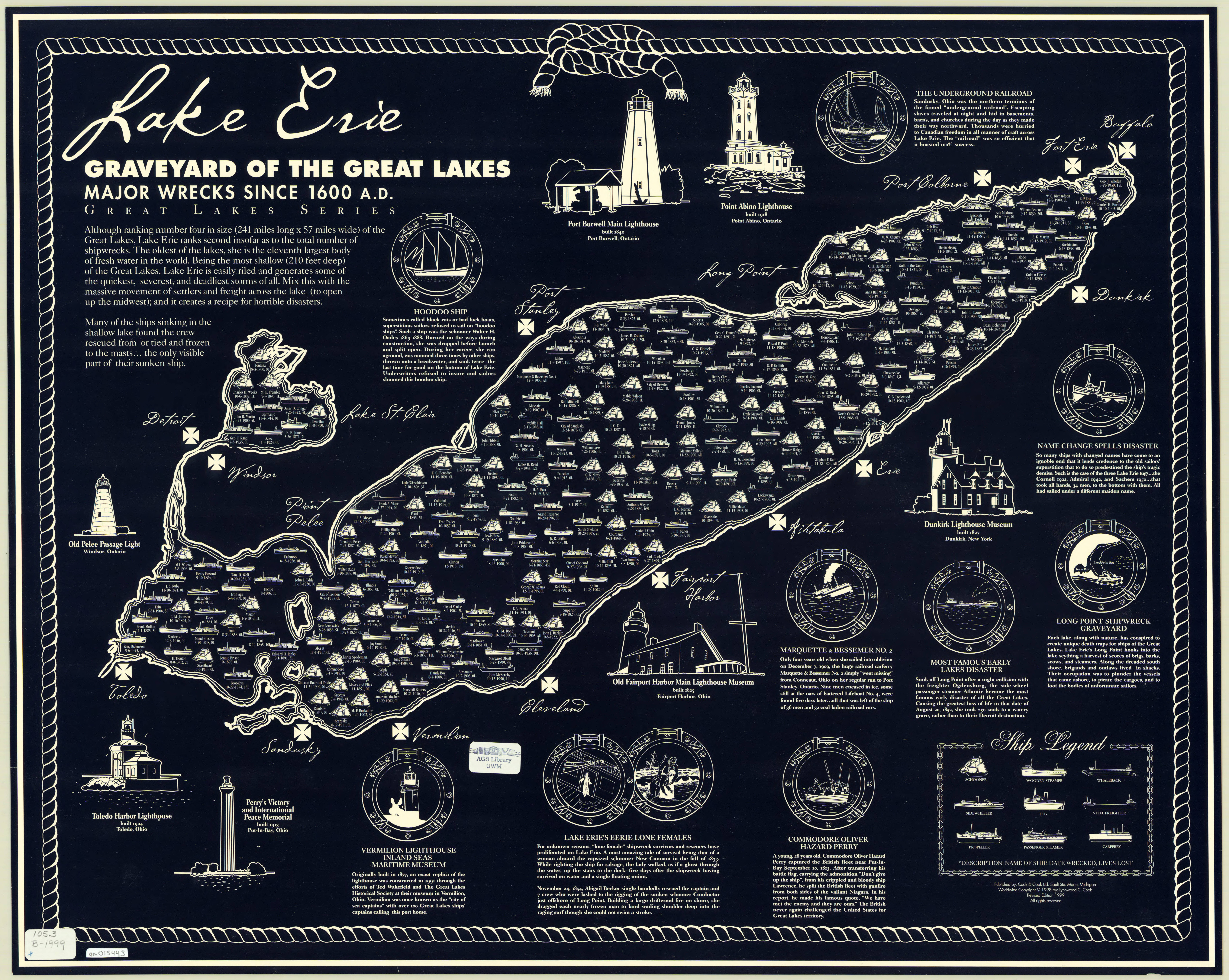
Lake Erie is the fourth-largest of the Great Lakes by area (9,910 square miles, or 25,700 km2), the smallest by volume (116 cubic miles, or 484 km3), the shallowest (on average 62 feet, or 19 m), and the most southerly of the five. Tiny Middle Island, in Lake Erie, is the southernmost point of Canada, just 57 miles (92 km) further north than Manhattan.
Despite its small size, Lake Erie comes second in terms of number of shipwrecks. Because of its shallow depth, storms can easily turn heavy and deadly here. Crewmen, surviving or not, were often found clinging to the masts of their ships, still sticking out above the un-deep waters. It was also one of the busier lakes, and for many escaping slaves, it constituted the last leg of the Underground Railroad taking them to freedom in Canada.
Some interesting names from Lake Erie’s shipwrecks: the Tashmoo (+1936), the Iron Age (+1909), the Sweetheart (+1913), the Chicago Board of Trade (+1900), the Handy Boy (+1888), the Faustian (picked the wrong kind of pact, apparently; +1912), the Mary Jane (+1881), and the Walk in the Water (+1821).
Lake Ontario: lots of spooky stuff
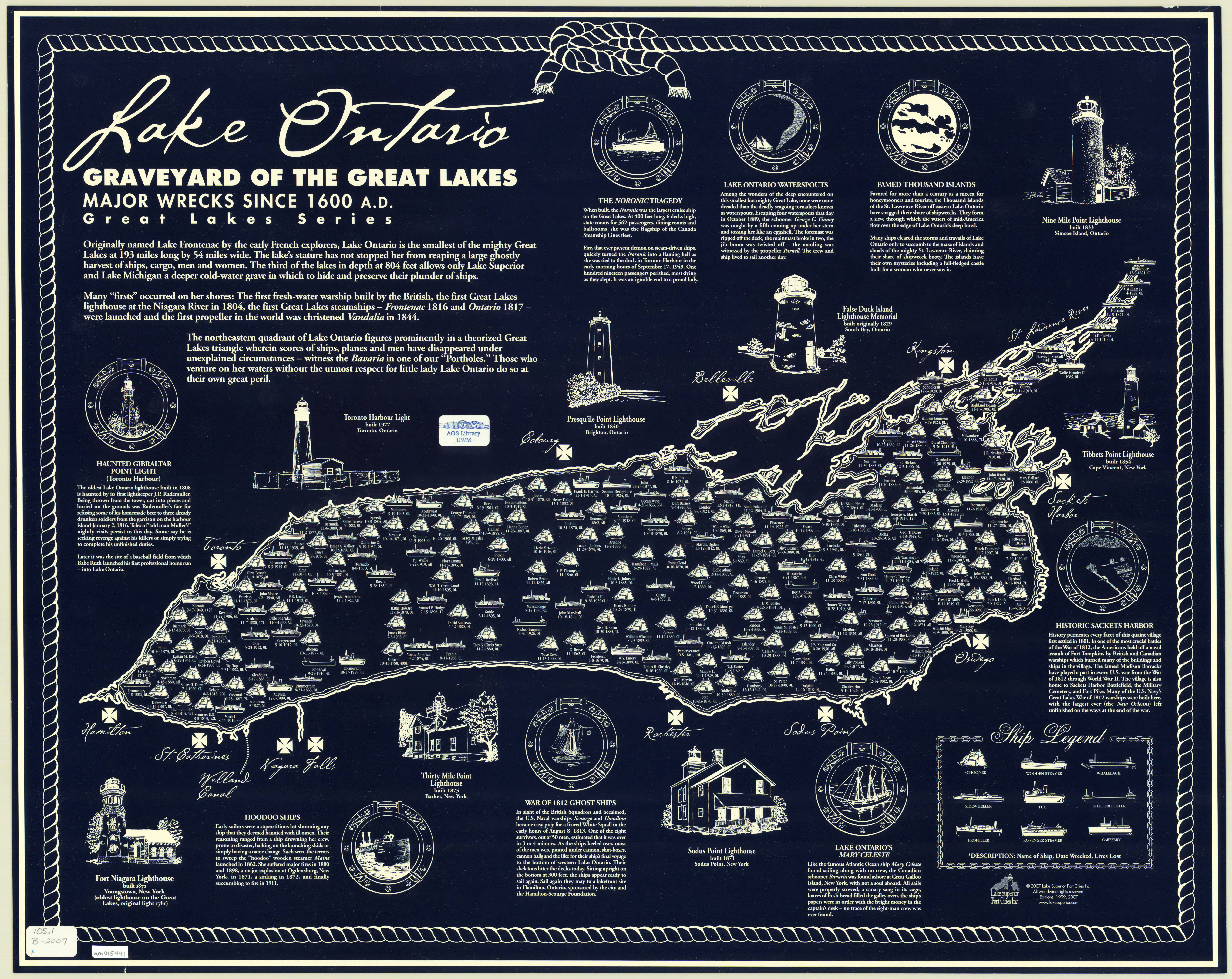
The lake formerly known as Frontenac is the smallest of the Great Lakes by area (7,340 square miles, or 18,960 km2). However, it is much deeper than Lake Erie and holds almost four times as much water (393 cubic miles, or 1,640 km3). At 243 feet (74 m) above sea level, it has the lowest elevation of the Great Lakes.
Lake Ontario has had its sizable and grisly share of Great Lakes shipwrecks — especially in the so-called Great Lakes triangle, where ships have been especially prone to disappear in mysterious circumstances. Even stranger is the story of the Bavaria, found ashore in good working order and everything in place — including a caged canary — except for its eight-man crew. The story of Lake Ontario’s very own version of the Mary Celeste has never been solved.
Want more spooky stuff? We didn’t even mention the Scourge and the Hamilton, ghost ships of the War of 1812. They keeled over after a white squall and remain sitting upright at the bottom, as if ready to sail again. Or the haunted lighthouse at Gibraltar Point in Toronto Harbor, still stalked by its first lightkeeper more than two centuries after he was gruesomely killed by a trio of drunken soldiers.
For the movie credit fans: the Black Duck (+1872) and the Wood Duck (+1880), the Madcap (+1900) and the Oddfellow (+1880), the T.J. Waffle (+1919) and the Dromedary (+1882), and yet another Water Witch (+1869).
Strange Maps #1143
Got a strange map? Let me know at strangemaps@gmail.com.
Follow Strange Maps on Twitter and Facebook.
